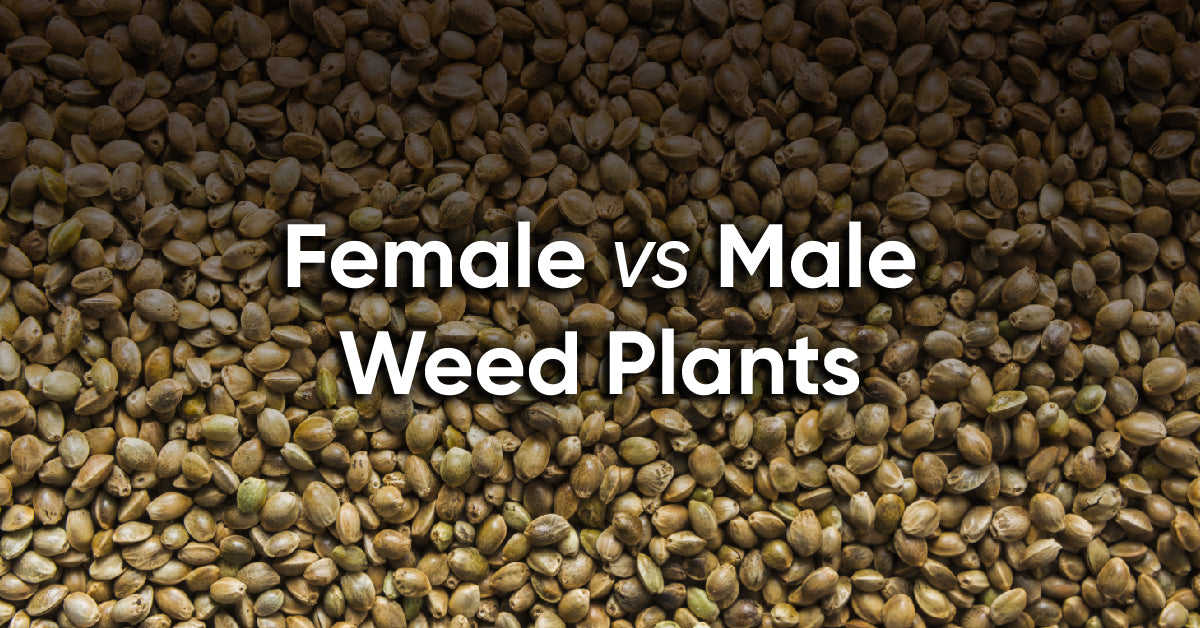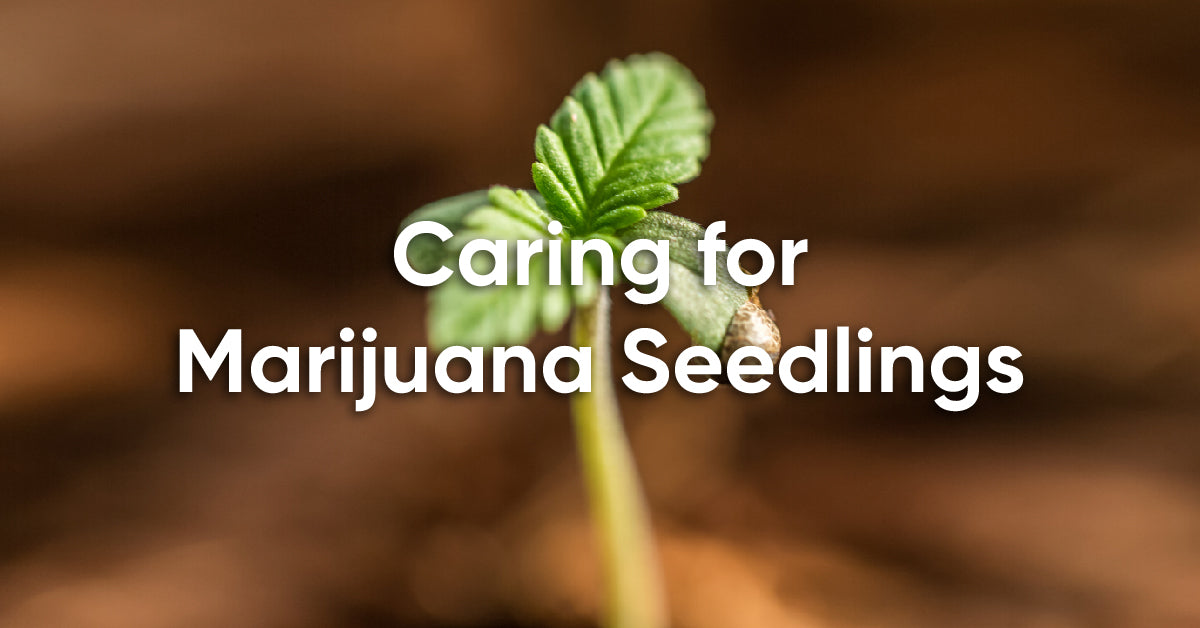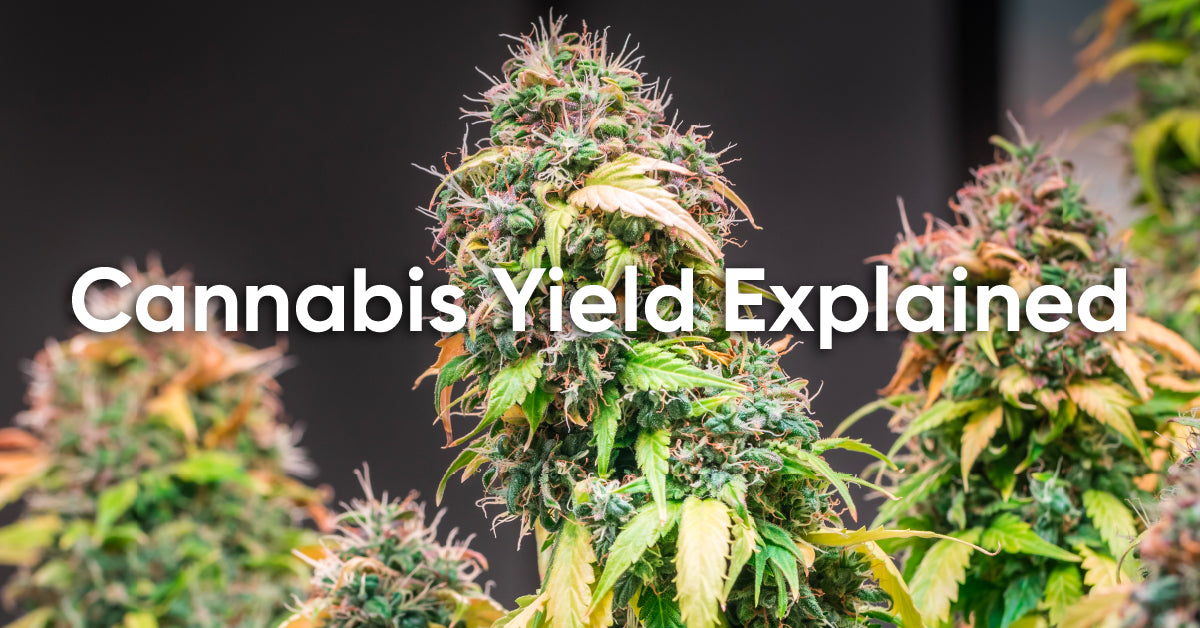How to Clone Cannabis with 7 Easy Steps & Transplant Them
If you're a cannabis enthusiast, you already understand the significance of growing your own plants. It's not just about the final harvest; it's about crafting the ideal plant, sculpting its genetics to perfection, and witnessing life take root before your very eyes.
In the following pages, we delve into the secrets of cannabis cloning – a mystical process that allows you to replicate the champions of your cannabis collection. Picture this: your favorite strain, with its distinctive aroma, taste, and effects, thriving in your garden, not once, but again and again. We're here to unlock the gateway to the captivating world of cannabis cloning.
Marijuana Clones vs Seeds
What is a Marijuana Clone?
A marijuana clone is just as it's named: a clone of its predicessor. It's a small branch taken from a healthy cannabis plant, usually a branch with some leaves, and it's used to grow a new plant with identical genetics. Think of it as a shortcut for growing cannabis. Cloning helps you replicate a plant that you already know is a winner. This way, you don't have to rely on seeds, which can sometimes be unpredictable. Clones are like the family recipes of the cannabis world, ensuring you get the same fantastic traits every time. So, if you've got a superstar plant, cloning is how you make an army of them!
Different Methods to Start your Grow: Clones and Seeds


marijuana seedling (top)/clone (bottom) grown in Hey abby grow box
seedling vs clone grown in Hey abby
Growers have two main pathways to embark on their cannabis-growing adventure: clones or seeds.
As mentioned earlier, if opting for clones, you usually start with a healthy, thriving "mother" plant and take a cutting (or clone) from it. This tiny piece, when nurtured, will grow into an exact genetic replica of its parent. It's like having a tried-and-true recipe for success, ensuring consistency in your cannabis crop.
However, if you're feeling a bit more adventurous, you might want to start from feminized cannabis seeds. Planting seeds is like starting from scratch. Each seed carries its own genetic surprises, potentially leading to a diverse range of characteristics in your plants. While it offers excitement and variety, it can also be a bit unpredictable, as you don't always know what you'll get.
Which One is Better?
Speed and Predictability
Starting from seeds means you'll need to be a bit patient. The germination process can take anywhere from 3 to 15 days before your marijuana seedlings are ready for transplanting. However, this method can yield some of the strongest genetics available for your chosen strain.
On the other hand, if you opt for marijuana clones, you're in for a speedier ride. Clones typically take about 8 to 15 days to root and become transplant-ready. These little troopers, born from trusted genetics, are always female, guaranteeing bud production (unless you have a specific reason for choosing otherwise). What's more, once they've taken root, clones tend to grow faster than their seedling counterparts.
Variability vs. Consistency
Growing from seeds introduces an element of surprise and diversity, as each seed can bring forth unique traits. If you're an adventurous spirit who enjoys a bit of unpredictability, marijuana seeds might be your cup of tea.
Conversely, clones offer a high degree of reliability and consistency. You know exactly what strain you're cultivating, and you can trust that your clones will develop into female plants, which are the ones prized for their bud production.
In the end, the choice between clones and seeds boils down to your preferences and priorities.
Not sure where to buy good seeds & clones? Explore this reputable choice, praised by many Hey abby growers for its dependable quality and diverse selection of strains.

8 Benefits of Cloning Cannabis

Cloning cannabis plants stands tall as the favored method among growers, and for good reasons.
1. Consistency: Clones ensure consistent and predictable results, as they preserve the genetic traits of the mother plant.
2. Rapid Growth: Clones bypass the seed germination stage, allowing for quicker growth and development.
3. Desirable Traits Preserved: Growers can perpetuate specific characteristics, such as high potency or unique flavors.
4. Cost-Effective: Cannabis clones are a budget-friendly choice compared to seeds, which can be on the pricey side. Plus, with seeds, there's a chance you won't get the exact traits you're hoping for.
5. Good Value: Cloning adds value by ensuring that desirable traits are consistently reproduced in subsequent generations.
6. Easy to Handle: Cloning is a simple and accessible process, even for novice growers.
7. Skip the Wait: Clones are ready to transplant immediately, eliminating the time-consuming germination process.
8. Resilient to Environmental Shock: Clones tend to be more resilient to environmental changes as they are derived from an established and healthy mother plant.
Step-by-Step Guide to Cloning Cannabis
Step 1: Preparing Your Toolkit
- Clean and sharp scissors, or a razor blade for making precise cuts.
- A healthy and well-established mother plant with desirable traits.
- Cloning gel or hormone to stimulate root growth (optional).
- A cup or container with drainage holes filled with a suitable cloning substrate (e.g., peat moss or rockwool).
Step 2: Picking a Good Cannabis Mother Plant

Hey abby grower using her previous grows as the mother plant
When selecting cannabis mother plants for cloning, there are several key traits that contribute to successful and consistent propagation. Your goal is to pick out healthy, vigorous, and genetically stable mother plants.
If you're uncertain about what constitutes a "good mother plant," you can refer to the following indicators:
1. Desired Characteristics: carrying specific traits you want to replicate in the clones, such as aroma, flavor, cannabinoid content (THC, CBD, etc.), yield, and growth patterns.
2. Yield Potential: demonstrating good yield potential, as this trait is often inherited by clones.
3. Resistance to Environmental Stress: showing resistance to common environmental stressors like temperature fluctuations, humidity changes, and nutrient variations.
4. Quick Rooting: Mother plants that root faster is more advantageous.
5. Age and Vigor: Younger mother plants may produce more viable clones than more mature plants. Older ones might be more prone to mutations and genetic instability.
6. Propagation History: consistently producing successful clones.
7. Branching and Structure: A mother plant with a robust branching structure is desirable, as it allows for more cuttings to be taken without sacrificing the plant's health.
8. Growth Rate: exhibiting rapid and steady growth.
9. Pest and Disease Resistance: low vulnerability to common pests and diseases.
10. Health: A wilted plant, or one that doesn’t produce good buds, won’t make a good mother.
Step 3: Making a Clone Cutting
Which Part of Cannabis Plant is Best for Clone Cutting?
You can either purchase cannabis clones from a nearby dispensary, or take matters into your own hands. If you opt to take a cutting from your own plants, your target is the apical meristem, located at the top of the plant. This area is preferable because it houses undifferentiated cells with a high potential for robust root growth. The apical meristem promises the best results and increases your chances of a successful cloning process.
Another good option is taking clones from smaller branches on the lower portion of the plant—this can be done while lollipopping in prep for the flowering stage!
How to Take a Cutting?

Look for a mature stem with 2 to 6 inches (5 to 15 cm) in length. Use a sharp and clean knife or pruning shears, and make a clean cut just below a leaf node (the point where a fan leave is attached to the stem). Finally, trim off the lower leaves to leave only a few at the top.
Once the clone has been taken, it's crucial to immediately immerse it in water, preferably in a glass with tap water, to prevent air bubbles or "embolisms" that could lead to the clone's death. Try not to leave your marijuana clone exposed to air for more than a minute.
Step 4: Applying Cloning Gel

Once you've got the perfect cutting, it's time to enhance its root growth potential. Apply cloning gel to the cut area to promote root development. This gel acts as a rooting hormone, stimulating the growth of new roots and significantly increasing the success rate of your cloning endeavor.
Step 5: Proper Watering for Clones
The water requirements for cannabis cloning is fiarly simple! You want to pre-soak the chosen rooting medium in a light nutrient solution. Once soaked, the clone shouldn't need water for the first few days, but you need to monitor the moisture of the rooting medium closely.
You want to let the rooting medium dry back slightly before applying more water. Do not let the medium dry out, but slightly dry back. This signals to the plant that it needs to expand its root structure in search for a water source, resulting in a more expansive root zone!
Step 6: Creating Ideal Temperature & Humidity
The environment in which the cannabis clone lives is one of the most important factors in successful cloning. The clones will need to be kept in a container, or dome, while the clone roots. This helps keep proper humidity level to the clone, which is crucial since the cutting has no roots to uptake water.
Ideally, you want to keep the clone dome in temperatures around 80° to help generate humidity and allow the plant's stomata (pores) to open! Some growers use heating mats under their cloning tray/dome to keep temperature and humidity up!
Step 7: Controlling the Light
To maximize your chances of successful cannabis cloning, place the prepared cuttings in a well-lit area with at least 16 hours of light exposure each day. If you're growing indoors, consider using indoor grow boxes or smart grow tent that come pre-assembled with full-spectrum LED grow lights. Hey abby just checks the box! Their built-in artificial lights provide the ideal intensity and a diverse spectrum, ensuring your plants can thrive even at home.
Step 8: Observing Root Growth
After completing all the necessary steps, it's time to be patient and observe the progress. Typically, roots will start to develop around a week after preparing the cuttings. During this period, avoid disturbing the cuttings to facilitate healthy root formation. When you're able to observe a strong and robust rooting system among the bottom of your cutting, you've succeeded on cloning!

Image via Hey abby grower
Remember that not all cannabis plants can be successfully propagated through cuttings. Some plants may have specific propagation methods, such as seed propagation or division. Additionally, each species or variety may have its own optimal conditions for successful cloning. Therefore, it's always a good idea to research the specific strains you want to clone to ensure you follow the right method.
How to Transplant Your Marijuana Clones?
When the cannabis cloning is complete, it's time to transplant your marijuana clones into the chosen grow setup, whether it's traditional weed tents, pots, or specialized grow boxes like Hey abby's. Please note that the stronger the root system, the better your clone will adapt to its new environment.
Next we'll walk you through how to transplant a marijuana clone to Hey abby's grow box. Yet these instructions can also apply if you're using other cultivation setups.
- Select an area with appropriate light coverage for your clones.
- Lower the light intensity and nutrient concentration to minimize transplant shock. In the Hey abby marijuana grow kit, the lighting settings will be automatically optimized for young clones.
- Gently remove each clone from its container, taking care not to harm the roots.
- Place each clone in the pre-dug holes of the growing medium and gently pack the substrate around them.
- After transplanting, water the clones to help them establish in their new environment.

clones can also be acquired from your local dispensaries
Conclusion
Cloning cannabis offers growers a reliable and efficient way to consistent results. Throughout this guide, we've explored the fundamentals of cannabis cloning, from selecting the perfect mother plant to nurturing your cuttings into robust clones ready for transplantation. Remember, patience, practice, and attention to detail are your allies in this journey.
So, roll up your sleeves, grab your tools, and get ready to clone your own cannabis plants! If you seek precision and convenience, it's a good idea to invest in advanced weed growing kits like Hey abby, which can support your cannabis clones from propagation to harvest.
Get Weekly Expert Tips, and Grow Healthy Plants
Join our newsletter to get exclusive growing tips delivered directly to your inbox.



